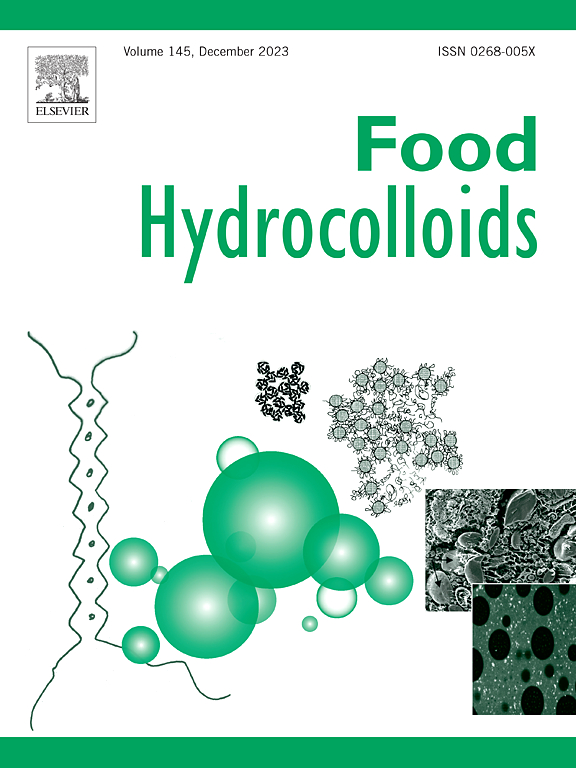Fabrication and characterization of edible inks for 3D printing of dysphagia foods based on corn starch stabilized by calcium ions and hydrocolloids
IF 11
1区 农林科学
Q1 CHEMISTRY, APPLIED
引用次数: 0
Abstract
Different starch modification methods have been proposed to broaden the application of starch-derived ingredients in the field of 3D printing. In this study, the effects of different concentrations of anionic hydrocolloids (xanthan gum and sodium alginate) and calcium ions (Ca2+) on the structural and physicochemical properties of corn starch-based edible inks were investigated. The presence of the Ca2+-crosslinked anionic hydrocolloids enhanced the gelatinization, rheological, and thermal properties of the corn starch, with the xanthan gum showing the best improvement. The crystal structure of the starch granules disappeared after gelatinization in both the presence and absence of the anionic hydrocolloids. However, the starch in the composite hydrogels had a more compact and uniform microstructure than that in the pure starch hydrogels. The observed improvements in the functional performance of the starch in the composite hydrogels were mainly attributed to alterations in noncovalent interactions, such as hydrogen bonding and ion bridging. The starch-hydrocolloid hydrogels exhibited better printing performance than starch hydrogels in 3D printing applications. Consequently, they have potential in the development of foods for people suffering from dysphagia. This research shows that anionic hydrocolloids can be used to enhance the functional performance of starch-based edible inks in the field of 3D food printing.

求助全文
约1分钟内获得全文
求助全文
来源期刊

Food Hydrocolloids
工程技术-食品科技
CiteScore
19.90
自引率
14.00%
发文量
871
审稿时长
37 days
期刊介绍:
Food Hydrocolloids publishes original and innovative research focused on the characterization, functional properties, and applications of hydrocolloid materials used in food products. These hydrocolloids, defined as polysaccharides and proteins of commercial importance, are added to control aspects such as texture, stability, rheology, and sensory properties. The research's primary emphasis should be on the hydrocolloids themselves, with thorough descriptions of their source, nature, and physicochemical characteristics. Manuscripts are expected to clearly outline specific aims and objectives, include a fundamental discussion of research findings at the molecular level, and address the significance of the results. Studies on hydrocolloids in complex formulations should concentrate on their overall properties and mechanisms of action, while simple formulation development studies may not be considered for publication.
The main areas of interest are:
-Chemical and physicochemical characterisation
Thermal properties including glass transitions and conformational changes-
Rheological properties including viscosity, viscoelastic properties and gelation behaviour-
The influence on organoleptic properties-
Interfacial properties including stabilisation of dispersions, emulsions and foams-
Film forming properties with application to edible films and active packaging-
Encapsulation and controlled release of active compounds-
The influence on health including their role as dietary fibre-
Manipulation of hydrocolloid structure and functionality through chemical, biochemical and physical processes-
New hydrocolloids and hydrocolloid sources of commercial potential.
The Journal also publishes Review articles that provide an overview of the latest developments in topics of specific interest to researchers in this field of activity.
 求助内容:
求助内容: 应助结果提醒方式:
应助结果提醒方式:


